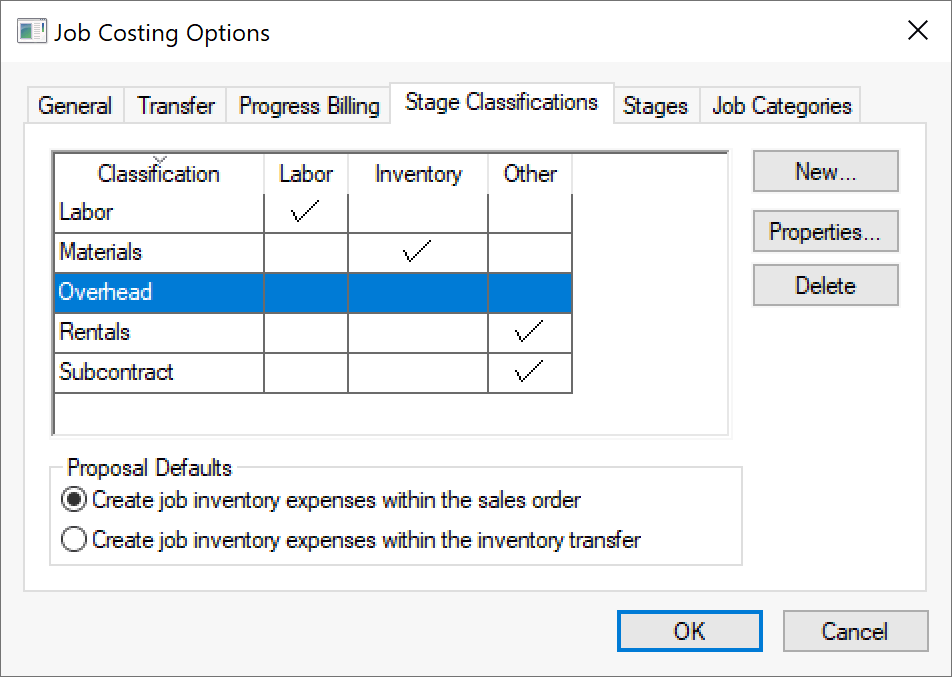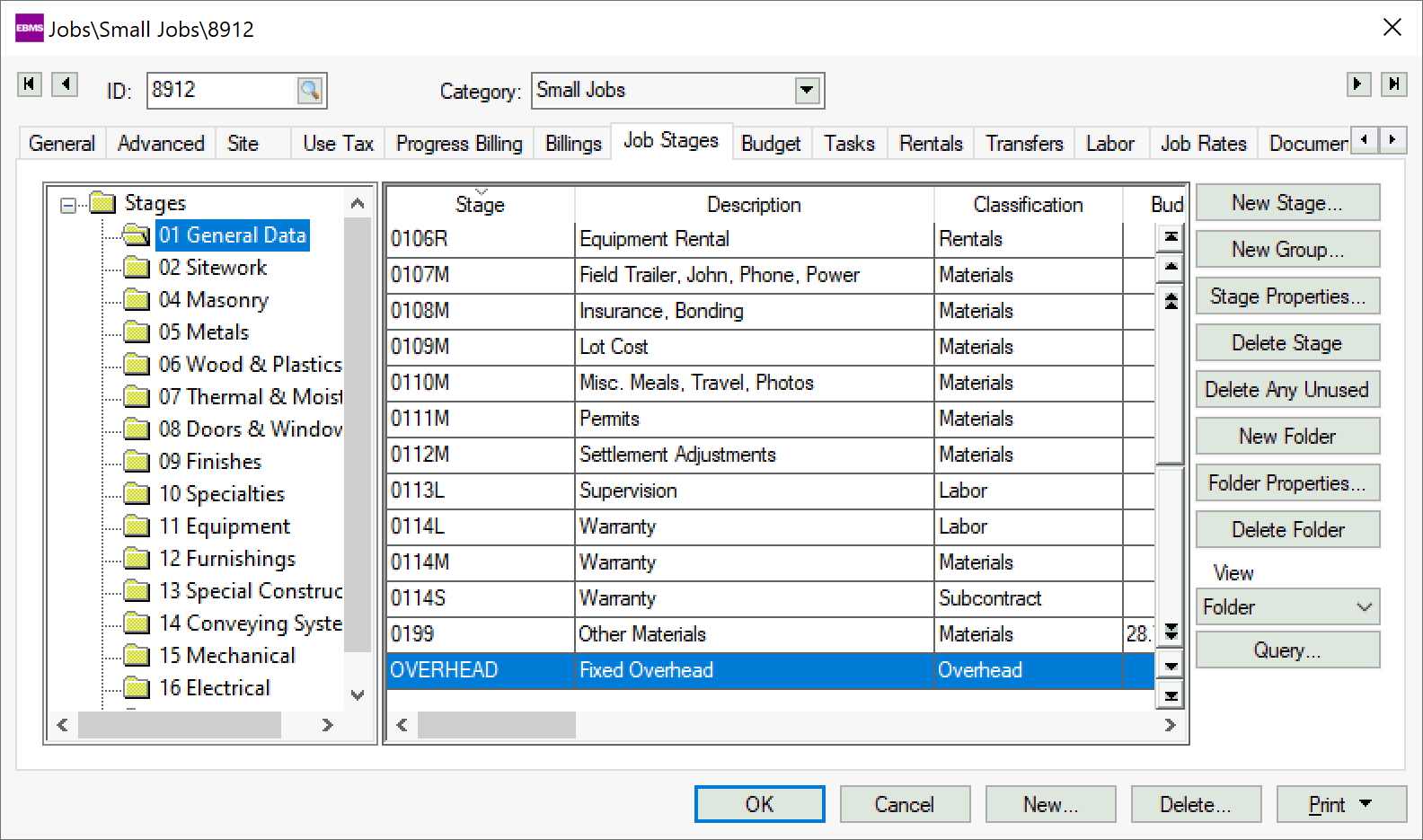The Overhead Stage
An overhead stage is a stage classification that
allows the user to enter a fixed cost in the budget of the stage. Unlike
all other stage classifications, the overhead stage does not calculate
actual costs from transactions. The actual cost calculation of an overhead
stage is calculated from the budget amount. The
actual cost (calculated from budget) of the overhead stage shows in the
Actual
Cost columns and summary fields in lists
and reports rather than the Overhead
column.
The overhead stage is useful in the following situations:
Additional miscellaneous supply
costs are to be added to the job cost. These costs are not direct
job costs from invoices but consist of a fixed amount entered by the
user.
The administrative overhead costs
are added to the job cost based on a fixed dollar amount rather than
a percentage. Review the Adding a Percentage Overhead section
for details on percentage overhead costs.
The user adds a fixed amount to
the budget for administrative or other overhead costs.
Some rules to consider when using the overhead stage:
The overhead stage can not be used
to post transactions from any expense entry window such as an expense
invoice, timecard, or inventory transfer window.
The overhead stage must contain
a budget amount. Otherwise the stage has no affect on job cost reporting.
The user can add multiple stages
classified as overhead for different groups of miscellaneous
or overhead costs.
The actual cost within an overhead
stage is calculated each time costs are posted to a given job. The
actual cost = budget amount * the percentage of the job that is completed. Percentage
complete = ratio between
the total actual costs of the entire job /
budgeted costs of the entire
job.
The overhead stage's actual costs
will show in the Actual Cost
columns within each screen and report rather than
the Overhead
column.
Complete the following steps to create an overhead
stage:
An overhead classification must
be configured before an overhead stage can be created.

Review the Introduction > Classifications
section for detailed instructions on creating an overhead classification.
Create an overhead stage within
the master stage list. Review the Introduction
> Stages section for detailed instructions on how to create
a new stage.
Insert the new stage within a job.
Review the Jobs > Entering Job
Stages section for details.

Do not confuse the stage classified as Overhead
with the overhead totals and columns listed on job
costing reports. The overhead stage will list the actual costs in a similar
manner as actual cost transaction within any stage. The overhead column
shown on reports and list is the overhead calculated from the Percent
of Cost calculation within the
Totals
tab of a stage.

